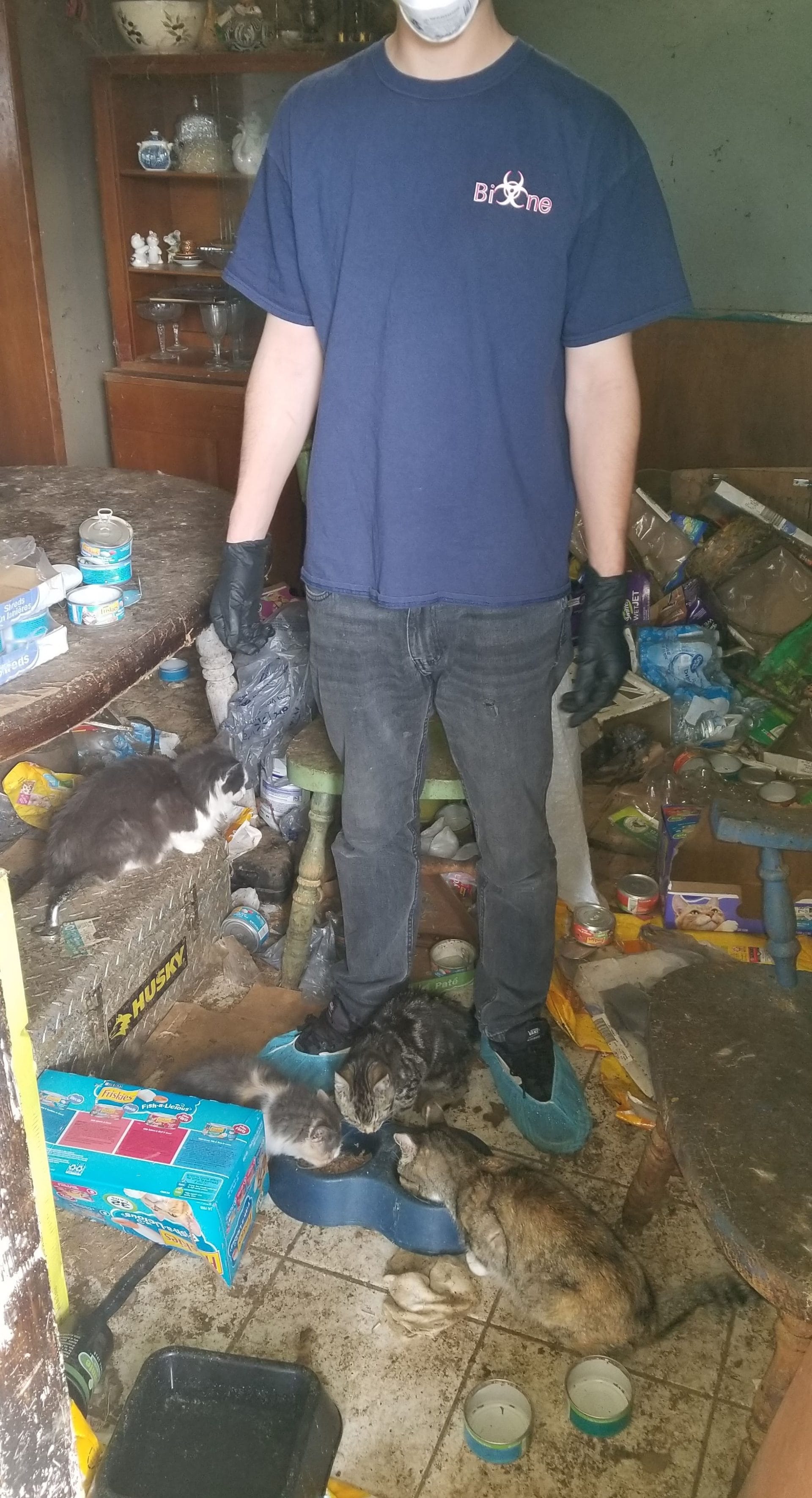Animal Hoarding
The Ugly Truth
OCT 08, 2020 by Rebecca Wallace

Animal hoarding is something that is more common than you might realize. Sometimes you will hear about it in the news, magazines and social media. You will hear how the animals were rescued and the person who is responsible for their mistreatment has charges against them. But what happens to the animals? Who rescues them and what do they go through? What happens to the home?
There are many aspects to take into consideration when talking about animal hoarding. One of the biggest is who is going to take the animals and what condition are the animals in. When there are large numbers of animals who need to be removed from a home a one time, most times, multiple rescues have to help. As much as rescues prepare for any situations, you can never really be prepared for 100+ animals, who are probably sick, to come into your facility all at once. Recently there was a cat hoarding situation in Peoria, Arizona in which 133 cats were being kept in an apartment. Missy from La Gattara Cat Cafe was the first person contacted to help. The cats ranged from newborn kittens, pregnant cats and adult cats and some were sick and most were not spayed or neutered. Also, as you can imagine the living conditions were unimaginable and the air quality was so bad you could barely breath. Missy knew she could not take all of the cats by herself, she needed help. Missy put out the call for help to other rescues across Arizona and many answered the call. 23 of the cats went to a rescue, Ark Cat Sanctuary in Flagstaff, Arizona. Ark Cat Sanctuary gets so many calls for hoarding, that when Missy called, they not only took 23 of the cats, but they put a plan in place to build a habitat specifically for cats coming out of hoarding situations. What a lot of people do not understand is when animals are in such bad living conditions coming out of that they quickly need to be assessed for disease, parasites and trauma. They cannot immediately go into a new home. They need to be rehabilitated and that takes time and money. The rescue community relies on fundraising, grants and volunteers to help.
Once the animals are rescued from the home, there is a lot of hard work that needs to be done to make the home habitable again. There are many companies that do clean out homes from hoarding situations. However, there is 1 company that is preferred, and that is Bio-One. Bio-One works hand in hand with rescues to make sure all animals are out safely. When there are very young puppies, kittens or elderly animals, they like to hide. So it takes care and focus to look for these animals and get them out of the home into the rescues arms safely. Also, Bio-One always has a staff member on site that is trained in animal rescue and pet first aid in case an emergency situation occurs. While this is taking place, Bio-One is also removing debris, feces, urine, damaged items and anything else that needs to go. Many times there is thousands of dollars in damage in the home. Making sure you have a company that cares is very important because these situations are very sensitive.
The last piece of the equation is mental health. Hoarding is recognized as a disease and should be treated as so. People who hoard need physiological help or they will most likely revert back to hoarding. Do not turn your back on them, offer them help. The other people who may need a therapist to talk to are the rescuers. They see a part of humanity that many do not want to acknowledge is there or do not understand. They see abuse, death and trauma daily. Yet, they do it day after day. The psychological tole that takes is huge.
So what can you do to help?
First, if you are looking for a new pet, please consider adopting from a rescue. It is so rewarding and helps save a life.
Second, if you are looking to volunteer, please call your local animal rescue to volunteer with them. Most rescues are looking for fosters, adoption specialists, comfort volunteers to sit or play with the animals, and many other things.
Third, donate to your local rescue. Blankets, food, litter and toys are common things you can easily buy that a rescue can use.
Fourth, if you know someone is a hoarder, please say something to them gently and with love. Offer them support.
If you have any questions you can reach out to us at any time. We are always here to help.
info@BioOneFlagstaff.com | 928-863-8276 | info@BioOneScottsdale.com | 480-276-4061


